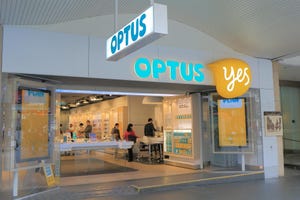
Comcast and Charter have mostly established their mobile businesses in the US market. Both offer a range of phones and services, including bring your own device (BYOD). Both have engaged in significant marketing efforts.
But their results in mobile have largely failed to excite Wall Street investors.
"We cut the growth rate for Cable, following [Q4] adds at Comcast that were well below our estimate," wrote the analysts at Wall Street firm New Street Research in a recent report to investors. "We still assume Comcast accelerates net adds, just later and more slowly than before."
"We continue to believe the Cable threat is currently limited," agreed the analysts at Cowen & Co. in their own report to investors. "Specifically the MSOs lack owners economics, distribution, and aren't focused on winning in wireless, and instead are focused on winning a subset of their customer base."
Importantly, the Cowen analysts noted that both Comcast and Charter reported mobile customer additions in the fourth quarter that were well below Wall Street expectations. The analysts said Comcast's 227,000 new mobile lines in the fourth quarter were below expectations of 250,000, while Charter's 113,000 new mobile lines during the period fell below expectations of 123,000.
"For Comcast, we now model +875K net adds in 2019 for a total attach rate of ~7% of the Comcast HSI customer base, and for Charter, we now model +475K net adds in 2019 for a total attach rate of ~2.5% of the Charter HSI customer base," the Cowen analysts wrote.
Similarly, the New Street analysts said they lowered their expectations for the cable industry's performance in the postpaid mobile sector in the coming years. Previously the firm had forecast cable companies to collectively command about 10 million customers by 2020 and roughly the same number in 2021. Now, though, the firm expects cable players to count just 6.3 million customers in mobile in 2020 and 9.8 million customers in 2021.
In comparison, New Street expects Verizon to count 89 million postpaid customers in 2021, and AT&T around 60 million.
In the fourth quarter, Comcast raised its Xfinity Mobile subscriber lines to a total of 1.2 million. And though the business is still operating at an EBIDTA loss -- $191 million for Q4 2018 and $743 million for the full year -- it's "on track" to achieve the primary objective of generating "positive standalone economics," according to Comcast's Michael Cavanagh.
Comcast launched Xfinity Mobile in May 2017, though the offering is only available in Comcast's cable footprint and is bundled with the MSO's other offerings.
Meantime, Charter ended 2018 with a total of 134,000 mobile lines in service. Charter's mobile-related expenses (which include costs tied to a joint venture with Comcast) were $211 million in Q4, and its mobile business had an EBIDTA loss of $122 million in the quarter.
You're invited to attend Light Reading’s Big 5G Event! Formerly the Big Communications Event and 5G North America, Big 5G is where telecom's brightest minds deliver the critical insight needed to piece together the 5G puzzle. We'll see you May 6-8 in Denver -- communications service providers get in free!
Altice USA, the nation's fourth-largest cable operator, plans to enter the mobile space via an MVNO with Sprint -- likely using the "Altice Mobile" brand -- sometime in the coming months.
The entry of the cable industry into the wireless industry has been carefully watched by investors eager to see whether Xfinity Mobile and Spectrum Mobile would be able to take significant business away from stalwarts like AT&T and Verizon. While that doesn't seem to have happened, cable players have generally argued that their wireless efforts are primarily geared toward making their cable and video offerings stickier, thus stemming potential customer losses to mobile providers. Starting with Q1 2019 results, Comcast will report Xfinity Mobile as part of its "cable" segment; Xfinity Mobile numbers had previously been reported in Comcast's corporate operations bucket.
Nonetheless, executives for both Charter and Comcast have argued that their mobile businesses will eventually reach a positive financial situation, at least at some point in the future. "It's early stages, but it's kind of what we hoped for, exactly what we hoped for," Comcast's David Watson said at a recent investor event, according to a transcript of his remarks.
As Wall Street interest cools on the mobile businesses of Comcast and Charter, investors are now wondering whether the companies should invest in "owner's economics" in wireless. Meaning, should Comcast and Charter seek ways to further decrease the amount of money they pay to Verizon for the use of Verizon Wireless's network? (As MVNOs, both Comcast and Charter pay for access to Verizon's LTE network based on the amount of LTE data their customers use each month).
Already Comcast and Charter offload their mobile customers' traffic onto WiFi hotspots, where they are available, but many believe both companies are considering additional offloading mechanisms to further reduce the network-usage payments they make to Verizon. That effort may well hinge to some degree on the cable companies' construction of new wireless networks using the newly free 3.5GHz CBRS spectrum band. A growing number of devices, including the new Samsung Galaxy S10, sport support for that band, and new technologies like eSIM could potentially enable easier switching among different LTE networks. But those in the industry cite a wide range of obstacles, both of the technical and the business variety, to a broader offload effort by Comcast or Charter centered on 3.5GHz CBRS networks.
A final element in the equation is the overall effect of cable's entry into wireless, in terms of the wireless industry's competitive environment. T-Mobile has argued that cable's entry into wireless reflects a heated level of competition, a position the company is using to urge regulators to approve its proposed merger with Sprint. It's unclear whether Wall Street's newly muted view of cable's wireless efforts will undercut T-Mobile's merger argument.
— Mike Dano, Editorial Director, 5G & Mobile Strategies, Light Reading | @mikeddano
About the Author(s)
You May Also Like












